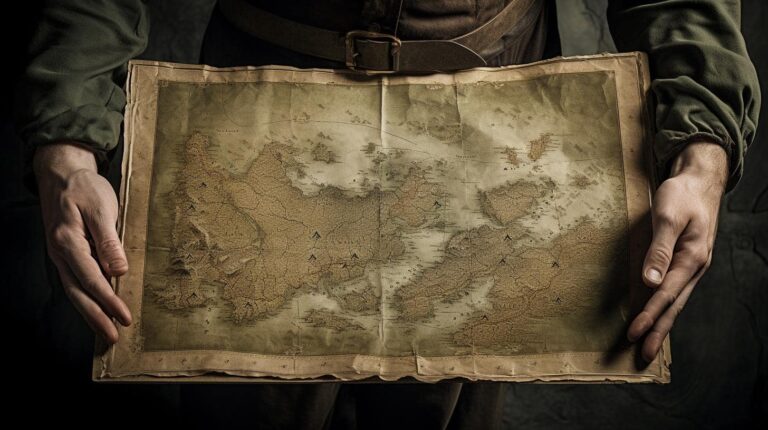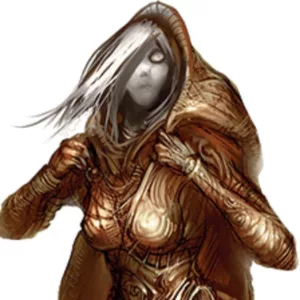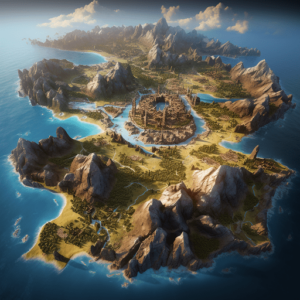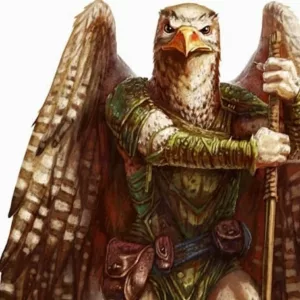
Continent Names and their History
The world as we’ve known it has several massive land masses rising above the sea level. These land masses were once a single piece of massive land located at the center of the Earth, called by geologists as Pangea. But due to continuous plate tectonic activities beneath Earth, the entire Pangea started to fragment one after the other reaching, to a point of scattering into what we know now as Continents.
Continents are the major division of Earth’s land. It is also a term used by geographers to identify different regions of the world including its associated islands near and around it. There are a total of 7 continents that exist on our Earth and we will get to know each continent’s names in this article. But why stop there? We’ll also share with you the art and science of naming continents. You’ll know some fun and creative Names for Continents that you may use on other works such as fictional stories, fantasy lore, and even games. Let’s get into it.
-
Terrapulse
-
Celestialis
-
Celestria
-
Ignisfera
-
Solareon
-
Pluvion

The Seven Continents of the World: Names and Brief Histories
There are a total of 7 continent divisions of Earth’s land. Each of them has distinct characteristics and notable features. We have known this concept since we were in 4th or 5th grade, but have you ever wondered how the actual names of the continents were created? In this section, we’ll tackle the etymology and meaning behind each of the 7 continents’ names.
History of Naming Continents
The first idea of naming continents can be attributed to the famous Greek astronomer, Ptolemy. During the early second AD, the only known continents of the world are Europe, Asia, and Africa. The other countries were later on named by European explorers and navigators; although it does not mean they were the ones to discover those lands as many civilizations already thrive in it before they knew them.
Africa
Africa is the second-largest continent in the world. Its boundaries are bounded by the Mediterranean Sea at the north, the Red Sea at the east, the Indian Ocean at the southeast, and the Atlantic Ocean at the west. Africa is separated at its centerline by the equator, with its northern region having a mostly dry humid environment, and the southern regions covered with scattered rainforests.
During the late antiquity period, the Greeks call the northern African regions Libya, which is a collective term to refer to the Berbers, situated in the region together with the Egyptians. It was the Romans who branded the land as Aprica which means “sunny”. Although this is highly disputed since there are existing terms such as Afru-ika (“motherland”) from the Egyptians and aphrike from the Greeks. Despite contradictions in the term, the usage of the Romans was more likely accepted because they also used the term “afri” or “afer” for the early Berber people of northern Africa. In Latin terms, the Romans call the entire surrounding lands of the Berbers “Africa Terra”, or simply “Land of the Afri people”.
Antarctica
Antarctica is the southernmost continent found directly at the base of the Earth. It is surrounded by the Southern Ocean and contains the South Pole of the Earth. Despite being one of the largest continents of the world, it is an inhospitable continent due to its harsh cold environment, remoteness, and inability to sustain agriculture due to lack of arable land.
The term Antarctica was derived from the word Antarctic; which in turn came from the French word antartique meaning “opposite of Arctic”. Arctic, on the other hand, came from the Greek word arktikos, which means “bear”, but is referencing the Ursa Major and Ursa Minor constellations found usually in the north. In short, the continent name of Antarctica simply means “opposite of the Bear”, or “opposite of the North side”. This same term was used by the Romans to identify a southern path or region. They use the term antarcticus (opposite of the Bear) to identify a direction away from the northern path.

Asia
Asia is the largest continent among the 7 continents of the world. It covers four-fifths of the eastern Eurasian land region. Due to the large coverage of the continent, the term “Asia” is often used only as a geographic term to describe “the rest” of the geographic areas outside Europe and Africa. Because of this, Asia is not identified as a homogenous continent, unlike the other continents. They are comprised of different diversities and cultures. To address this difference in cultural areas, Asia is often subdivided into subregions namely: the Middle East, Central Asia, East Asia, and Southeast Asia.
Like with Africa, there are a lot of possible sources for the name “Asia”. As a starting point, the first theory on the origin of Asia’s continent name is rooted in the Bronze Age. The Hittite word Assuwa refers to a place found in northwestern Anatolia (Asia Minor). Herodotus, a Greek historian and geographer in late 400 BC coined the term Ἀσία (Asia) in reference to Anatolia and the Persian Empire which both lie east of the Greek regions. Ancient Assyrians using the old Akkadian language have the word asu which means “sunrise” or “east”, another good candidate for the origin of Asia’s name.
Americas
The Americas are the two interconnected continents located in the Western Hemisphere. The two continents are called North America, the third largest continent after Africa, followed by South America. North America lies between the Arctic Circle and the Tropic of Cancer. It bounds the icy island of Greenland from the northeast and down to the small island countries bounded by the Caribbean Sea and west of the North Atlantic Ocean. The entirety of North America can be divided into five bounding regions: the mountainous west, the Great Plains, the Canadian Shield, the eastern region, and the Caribbean. South America, on the other hand, extends toward the Southern Hemisphere. It is bordered by the Pacific Ocean to the west and the Atlantic Ocean to the east. Its northern boundary is North America itself via Panama, and the Caribbean Sea, while its southernmost tip (Cape Horn) is nearest to Antarctica.
The term “Americas” was named after the Italian merchant and explorer Amerigo Vespucci. He participated in the early voyages to the so-called “New World” from 1497 to 1504. It was Christopher Columbus who first stepped into the Bahamas region in 1492. He initially thought that the area is part of Eastern Asia that has yet to be discovered. The Spaniard explorers concluded the same, referring to the area as the Indies. However, it was with the data gathered by Amerigo Vespucci that the voyagers were able to conclude that they discovered an unexplored region which they called the “New World”, thus the entire region was named after him in commemoration of his work.
Australia
Australia is considered the smallest continent, yet one of the largest countries on Earth. It is located between the Pacific Ocean and the Indian Ocean in the Southern Hemisphere. Archaeologists and geologists agree that Australia might be the “Oldest” of all continents based on the rocks and landforms that were estimated to have existed and survived during the Paleozoic era (4.6 billion years ago). It was the last continent to be explored by Europeans, thus completing the geographical map of the world that we now use today. Although before Europeans discovered the Australian region, Aboriginal explorers already made contact with the entire island and inhabited the surrounding lands for more than 20,000 years.
The continent name Australia came from the Latin word australis, which means “of the south” or “southerner”. Originally, the surrounding continent was termed “Terra Australis”, or “unknown southern land” when it was discovered by Willem Janszoon. It was then renamed Australia due to its ease of pronunciation and easy to remember.
Europe
Finally, the last of the seven continents and the second smallest continent is Europe. Europe is known to become the most advanced and industrialized continent during the 15th century AD. The advancement and success of Europe is probably associated with the historical experience of the region. Since the area is hospitable and filled with natural resources, settlers started to pop into every part of the area. However, due to its smaller size compared with other continents, settlers eventually started conquering other tribes, until they become a solid civilization.
It was the Greek geographer Ptolemy who divided the known world during those times as Europe, Asia, and Libya (Africa). The name Europe is theorized to come from the Greek words eurys (wide) and ops (face or eye), or in context “wide-gazing”. This is to describe Europe’s wide shoreline from the perspective of Greek mariners. Some sources argue that Europe may have been derived from the Semitic Akkadian language spoken in Mesopotamia, particularly Assyria. “Europe” was believed to be derived from the Akkadian word erebu (sunset), because its location is situated directly west of Mesopotamia and is where the sun sets. In complement, they use the term asu to identify a “sunrise” which they believe to be where the name Asia was derived.
The Art and Science of Naming Continents
If you have plans in creating names of continents, this section is for you as we will tackle some of the processes of how continent names were created in the first place. Not only that, but we will also include in the following section some creative Names for Continents that you may freely use for your content and literary works.
How Continent Names Are Made
Existing continent names have their origin and background. They differ depending on the source, and the most widely used term became the dominant name for the continent. The most obvious source of continent names is basing it from its geographical location. Europe and Asia both have their name based on their location at the “west” and “east”, respectively. The continent name Australia, came from the Latin term australis which means “south land”.
Geographical location is only one factor to draw out or inspire a good name of a continent. One may also consider the direction in which the continent is located. This is the case with Antarctica (“opposite of the North”), and Arctic (North or Bear). The method of using direction as a continent name is quite tricky. Instead of pointing directly to the north or south, geographers were able to create an ingenious name by using the term “bear” to refer to the northern constellations of Ursa Minor and Ursa Major.
Lastly, people’s names may also be used to create continent names. This is the case for Americas, being named after Amerigo Vespucci. Africa, in contrast, was named after the Berbers dwelling in it that was called “Afri” by the Romans.
There is no single rule or limiting factor that binds authors and writers in creating their version of continent names. There will always be multiple inventive ways to create names of continents. However, there will always be one thing in common that we are expecting to be included in your future continent names—its meaning. Make sure that the name you created is meaningful to make your continent naming more fun and appreciated.
Creative Names for Continents Ideas
- Ostium /os-tee-yum/ – Directly a Latin term for “doorway”. We think this name is ideal for thin continents that serve as a pathway between two or more other continents. Plus the pronunciation and form of the word are quite mesmerizing and fitting for a continent.
- Frigoria /fri-gor-ya/ – Derived from the Latin word frigoris which means “coldwind”. This name for a continent is ideal for a cold continent that has continuous cold weather throughout the year.
- Arderan /ar-de-ran/ – From the word ardere which means “ablaze”. This name can be envisioned for a continent surrounded by fiery volcanoes and dry ash lands.
- Valentia /va-len-sha/ – This name has its Latin and Italian origin, which also sounds nice and regal for a continent name.
- Morridrim /mo-ri-drim/ – A fantasy continent name derived from the name Zakk’ar Morridar, a powerful Orc chieftain. His people are called Morridri and their orcish continent is Morridrim.
- Wessiah /wes-sa-yah/ – A fantasy continent name derived from the language of the men of Wess. The men of Wess are also known as the men of “left” or “west”. Wessiah means “lefts” or “westerners”.
- Calagan /ka-la-gan/ – A fantasy name for a continent that is derived from the words cala (cover) and gann (stone), or simply “stone cover”. The people of Calageans are known for their remarkable skill in tilling the earth and creating mining pits that do not harm the surrounding ecosystems.
- Riddu /ri-du/ – Derived from the old Akkadian language for “customs”. The name has a nice ring to it, and its simple and short name makes it easy to remember.
- Annarand /a-nar-rand/ – A combination of the Old Norse words annarr which means “second” and land, or simply “the second land”. This continent’s name is perfect for stories depicting voyages of Viking raiders as they discover a new land to till… or pillage.
- Hestrand /hes-trand/ – A fantasy continent name derived from the Nordic word heldr which means “horse” and land, or “Horse Land”. This name is inspired by the Riders of Rohan in the story of The Lord of the Rings, where the soldiers of the specific area are mounted soldiers and skilled horse archers.
Continent Name Generators
As much as we wanted to create unique and self-made designed names, sometimes we do not have the time and energy to come up with names in the first place. If you are one of the many authors and game developers trying to complete a novel or fictional lore for a game, you may want to consider using a Continent Name Generator when formulating continent name ideas.
A Continent Name Generator is an AI-powered tool that can give users strong name suggestions particular to the continent names category. These generators can provide randomly-generated names that are unique and have never been used in other literature or games. By using a continent name generator, you can speed up your process of creating continent names without spending time in formulation and research. Not only that, name generators can help you draw inspiration in creating your version of continent names or you can directly use the names suggested by the generators without worrying about copyright violations. Lastly, they are easy to use, easy to find, and absolutely free to use.
In Conclusion
As a quick recap, let’s go back to some of the key highlights that you discovered while reading this article.
First, continents are the major division of Earth’s land and is the term used by geographers to identify different regions of the world including its associated islands near and around it.
There are a total of 7 continents in our world today, each with its origin and meaning behind its name:
- Africa – first coined by Ptolemy when he divided the world map during their time into three: Africa, Asia, and Libya. The term Africa has many origins and the most widely accepted is the term used by the Romans: “Africa Terra” or “Land of Afri People (Berbers)”.
- Antarctica – is a continent name based on the direction of the Ursa Major and Ursa Minor. The term used to denote the “northern” direction is Arctic (with the bear, thus “Ursa”), while the term used to denote the opposite of the bear is Antarctic since the continent itself lies directly south of the Arctic region.
- Asia – Also has many sources, but the most common is from the Akkadian term asu which means “sunrise”, denoting the lands in the east as the origin of the sun.
- Americas – The Americas has two gigantic continents: North and South America. “America” is named after Italian explorer Amerigo Vespucci in commemoration of his work leading to the conclusion that their newly discovered land is a “New World” and not the Indies.
- Australia – from the Latin term australis which means “unknown south land”.
- Europe – Like Asia and Africa, it also has many sources of origin. One particularly regarded source is from the Akkadian term erebu which means “sunset”, or simply describing the west side of the continent where the sun sets.
In creating a continent name, you may consider:
- Using names based on the location of the continent.
- Using names based on the direction of the continent.
- Using people’s names or civilization names for the continent.
- Creating a meaningful self-made continent name.
Lastly, use Continent Name generators to speed up your name search, name formulation, or name ideas. These continent name generators are easy to find, easy to use, and free—with no worry of copyright infringement or violations.
Table of Contents







